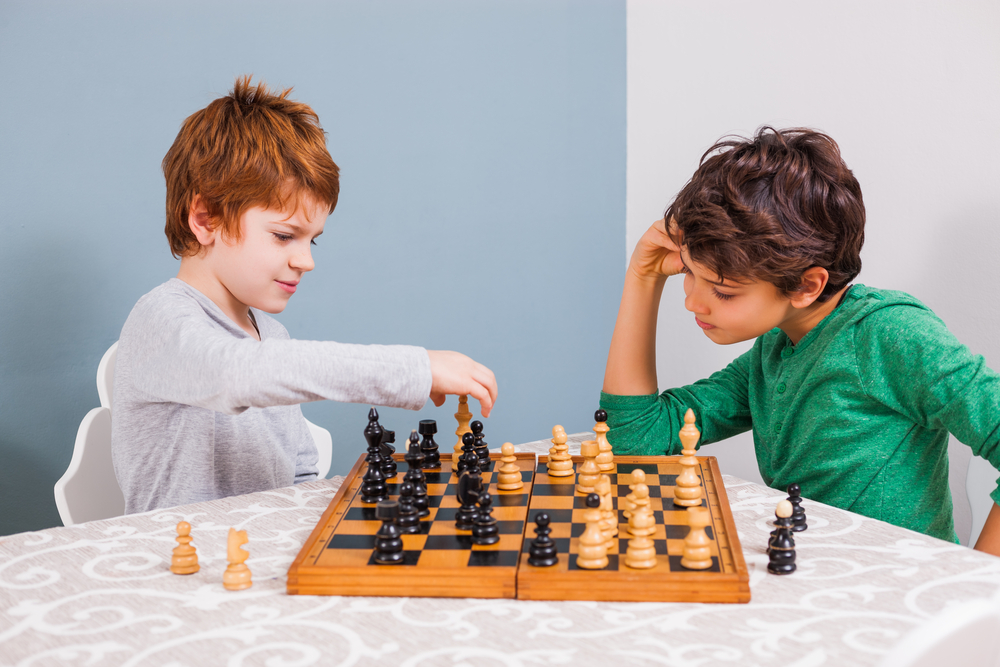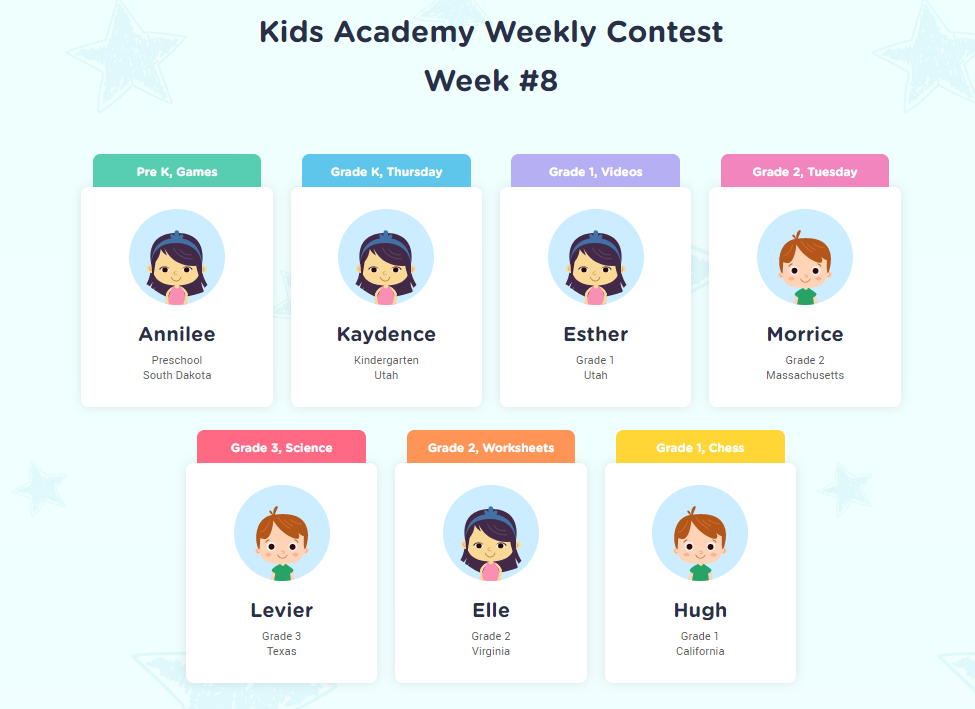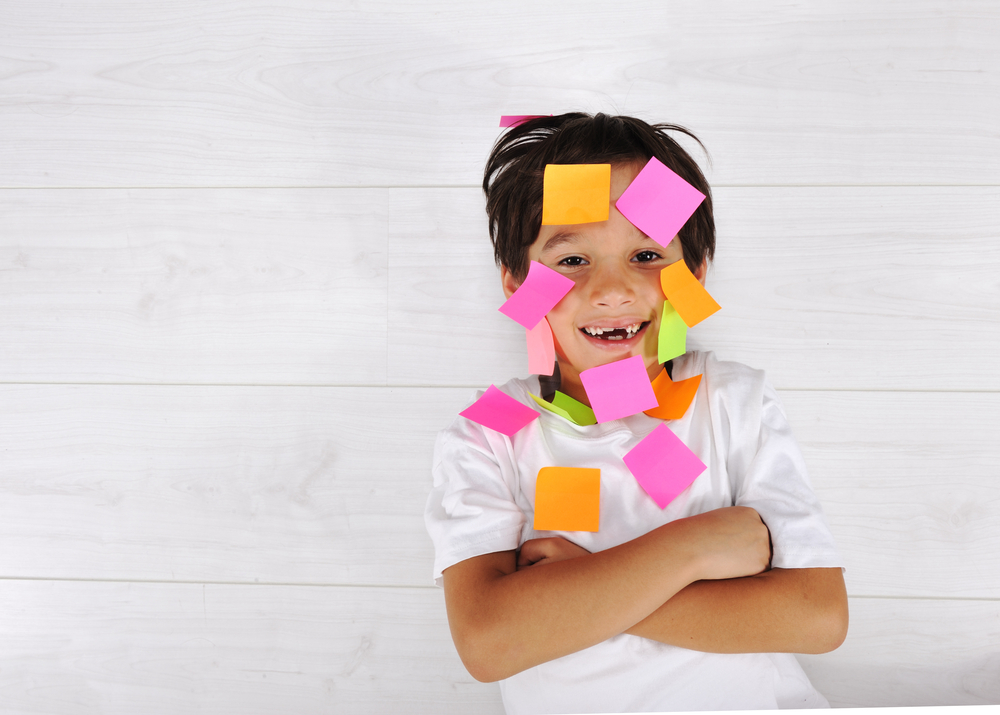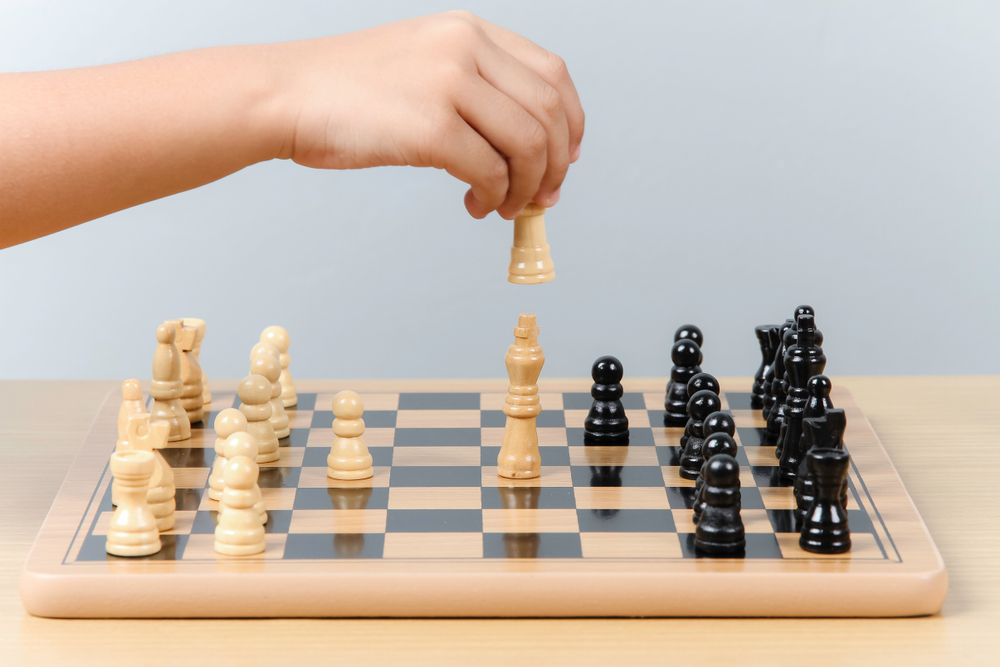Chess Worksheets for Ages 7-8 - Page 3
86 filtered results
-
From - To
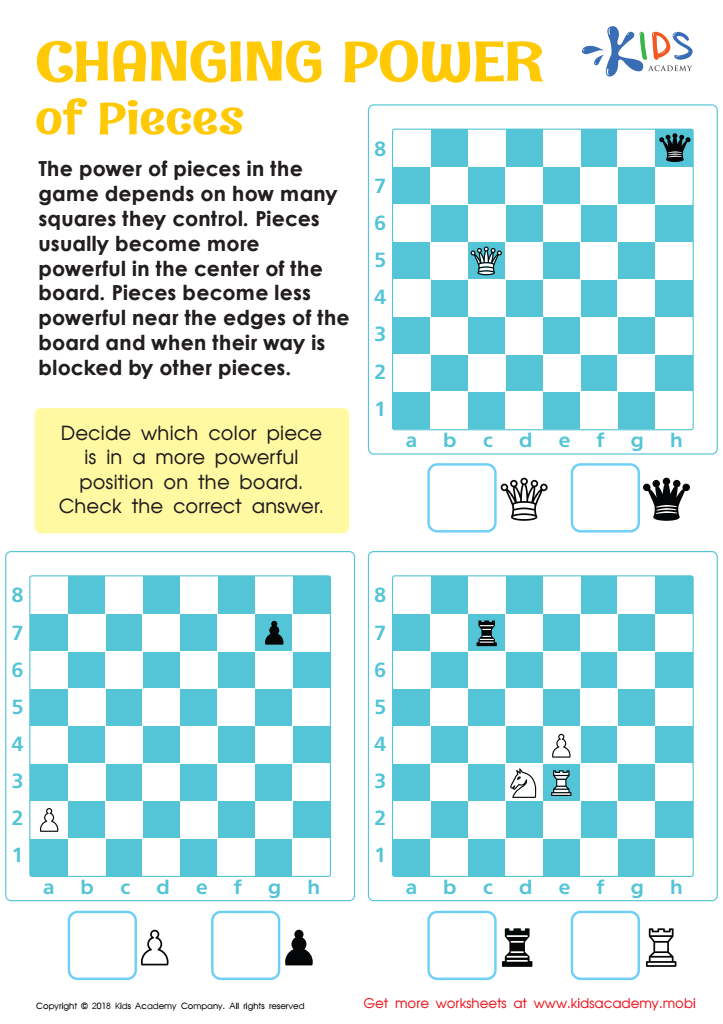

Changing Power of Chess Pieces Worksheet
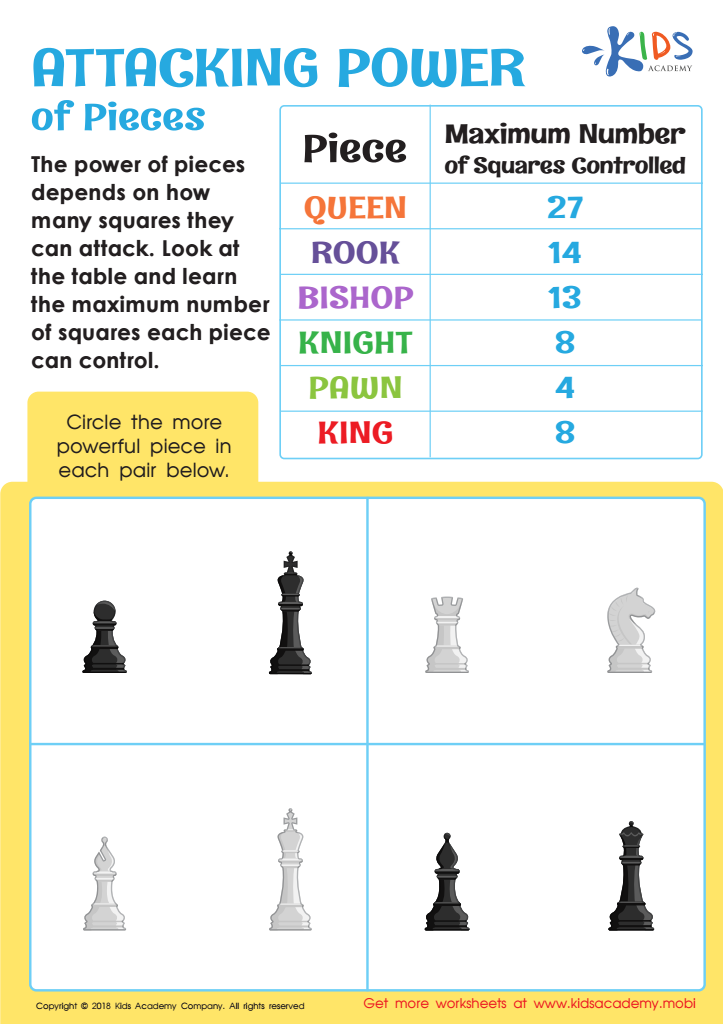

Attacking Power of Chess Pieces Worksheet
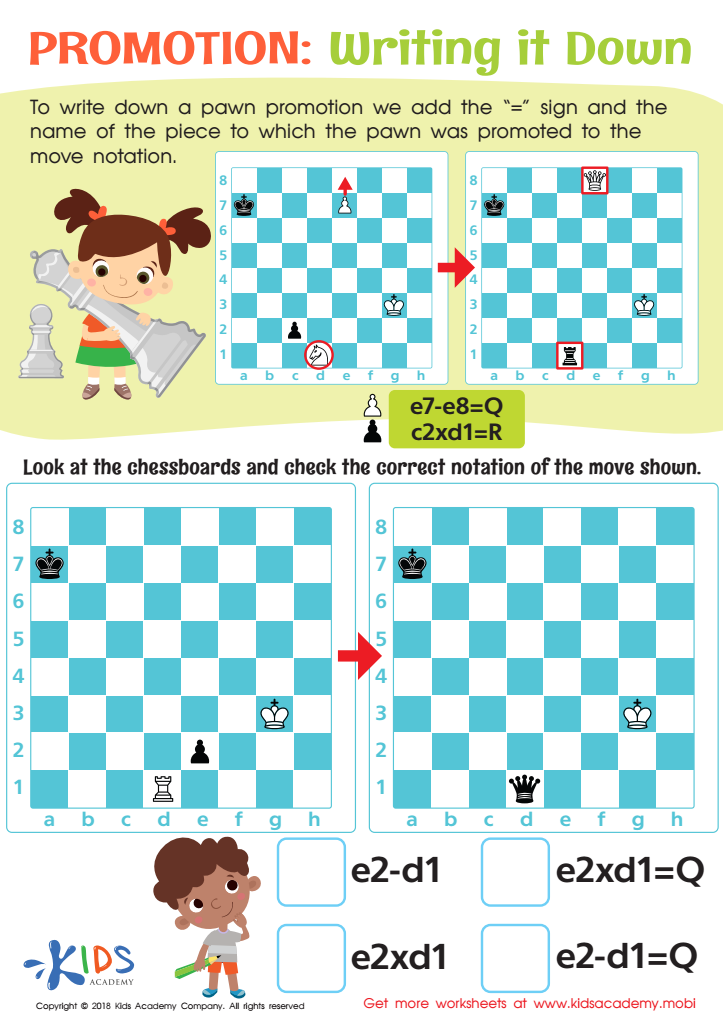

Writing it Down Worksheet
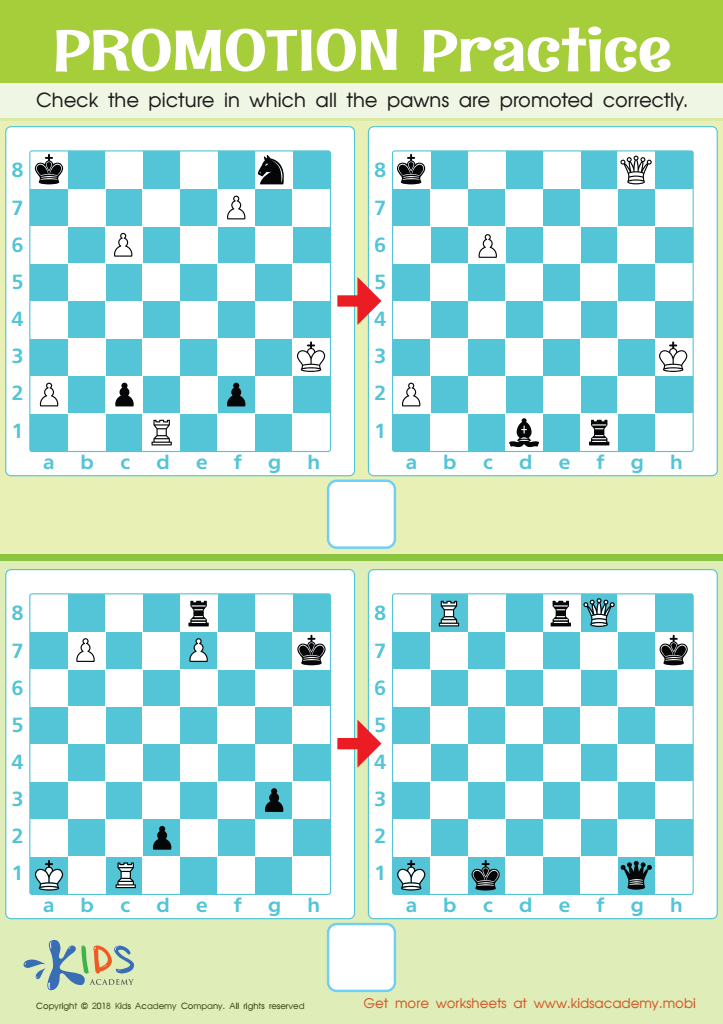

Promotion Practice Worksheet
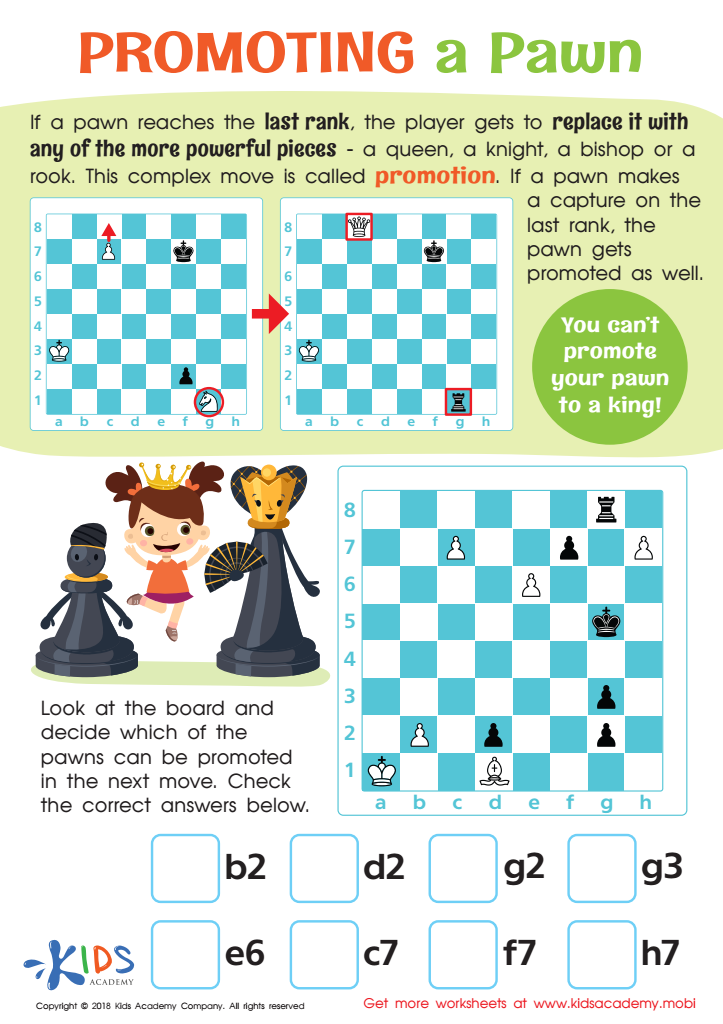

Promoting a Pawn Worksheet
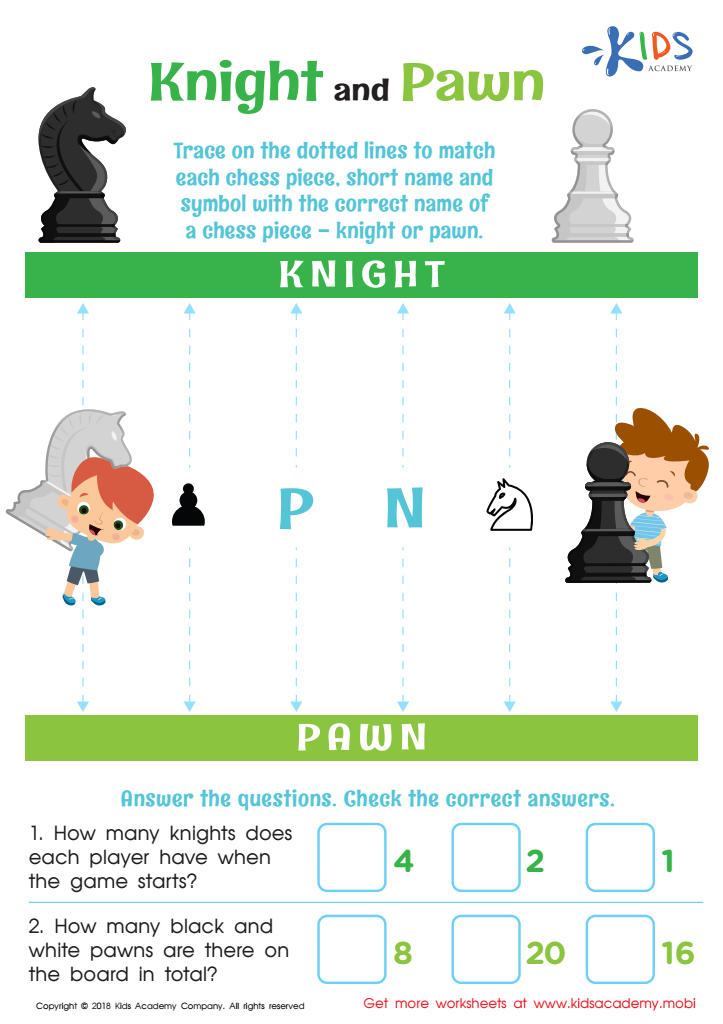

Knight and Pawn Worksheet
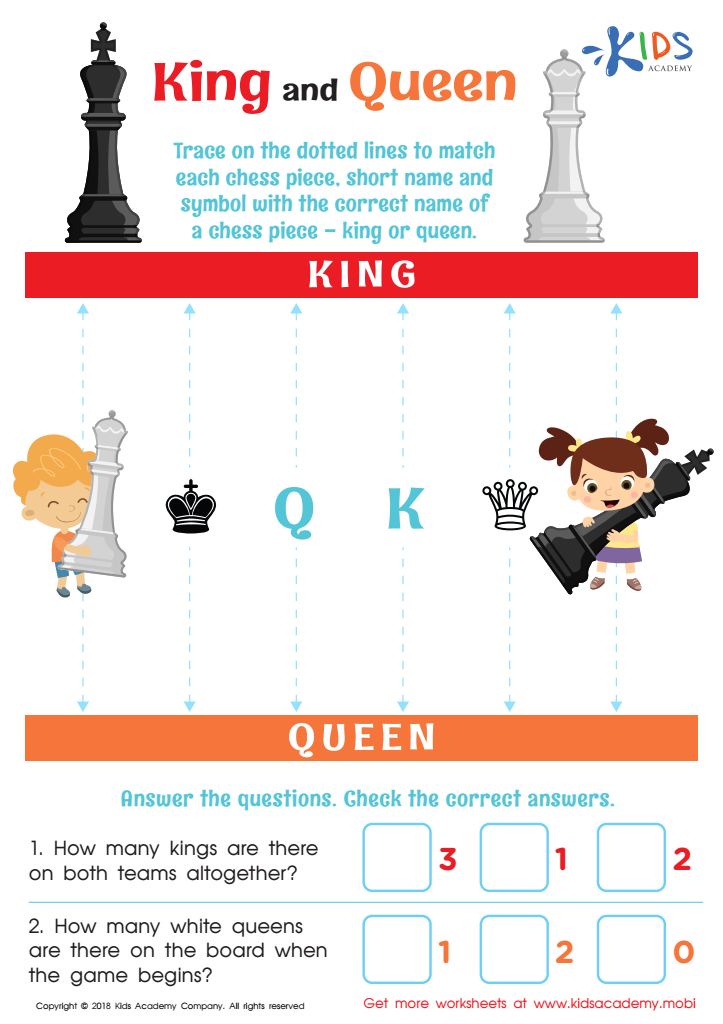

King and Queen Worksheet
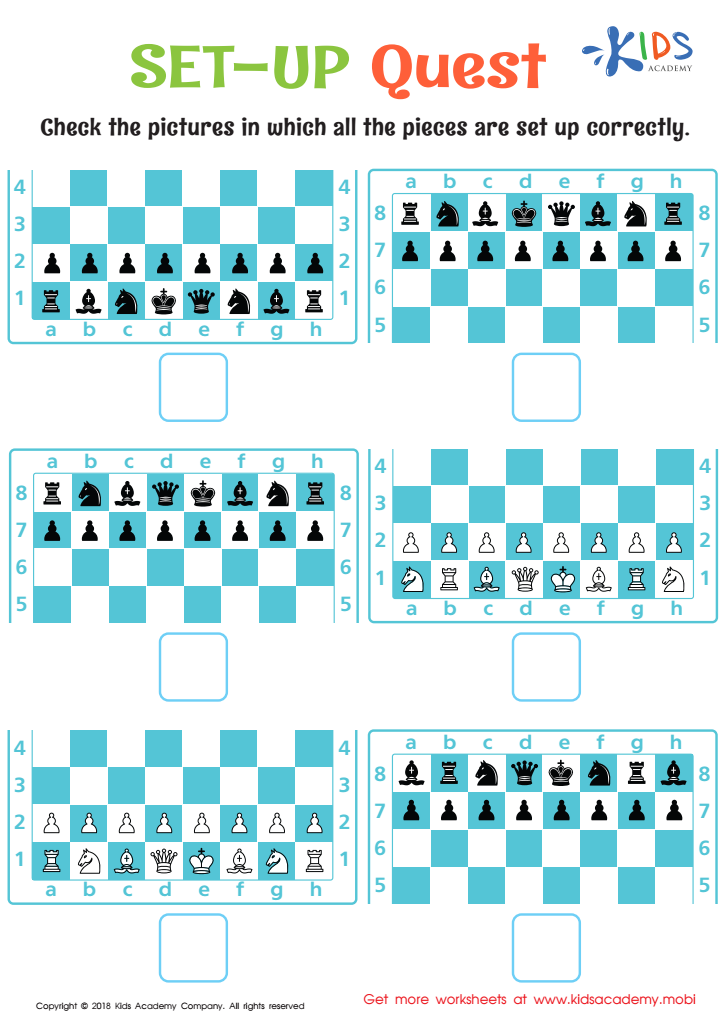

Set-up Quest Worksheet
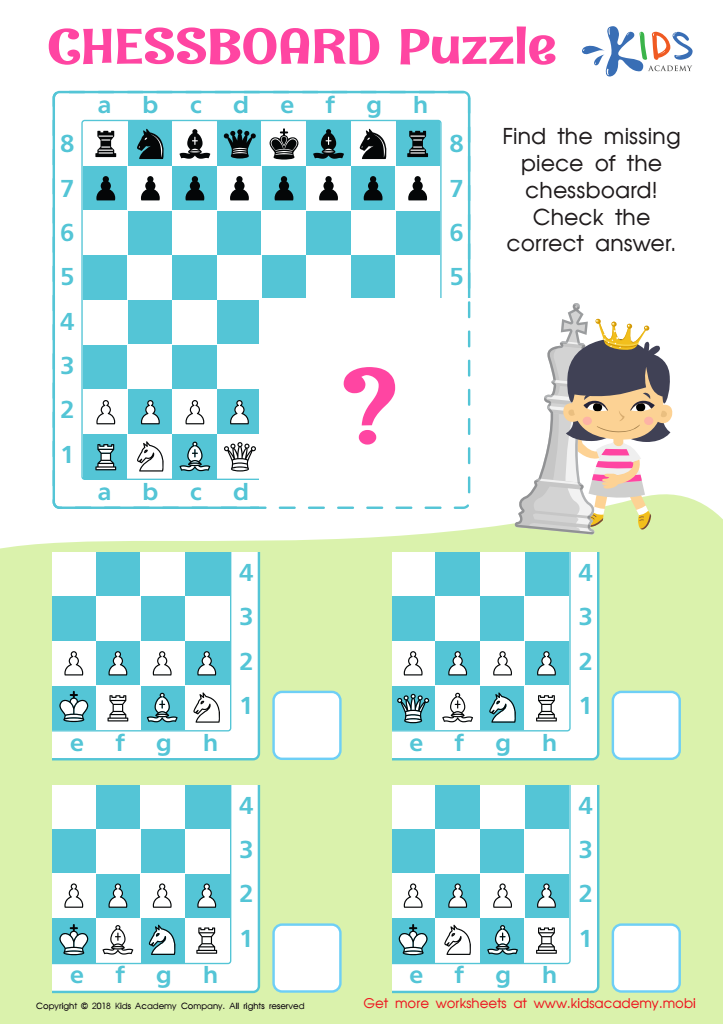

Chessboard Puzzle Worksheet
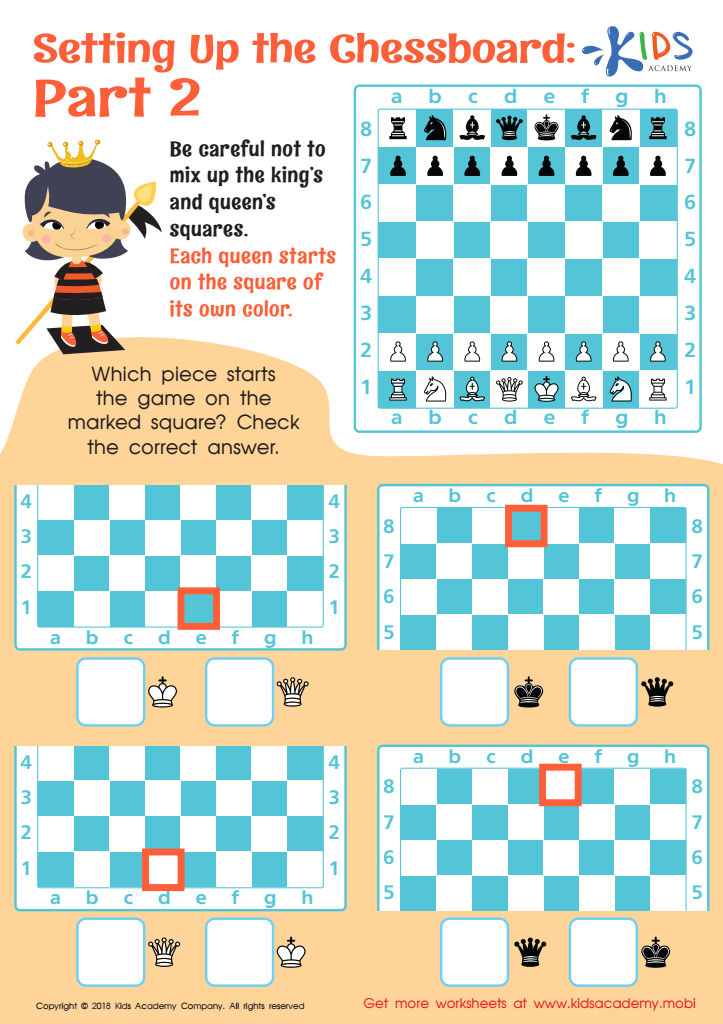

Setting up the Chessboard: Part 2 Worksheet
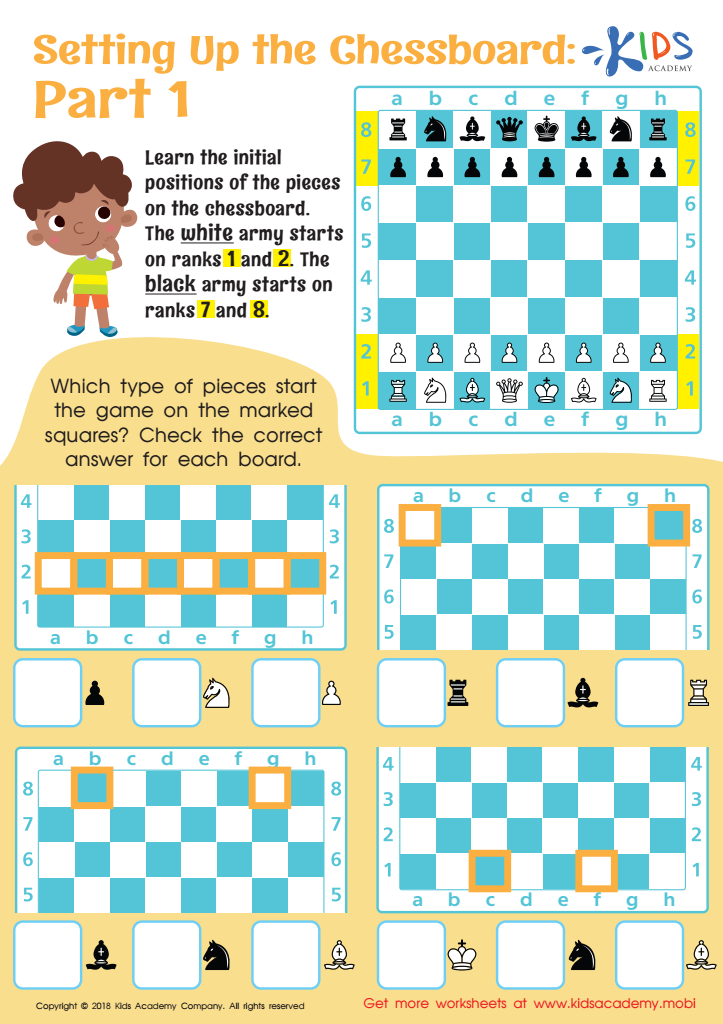

Setting up the Chessboard: Part 1 Worksheet
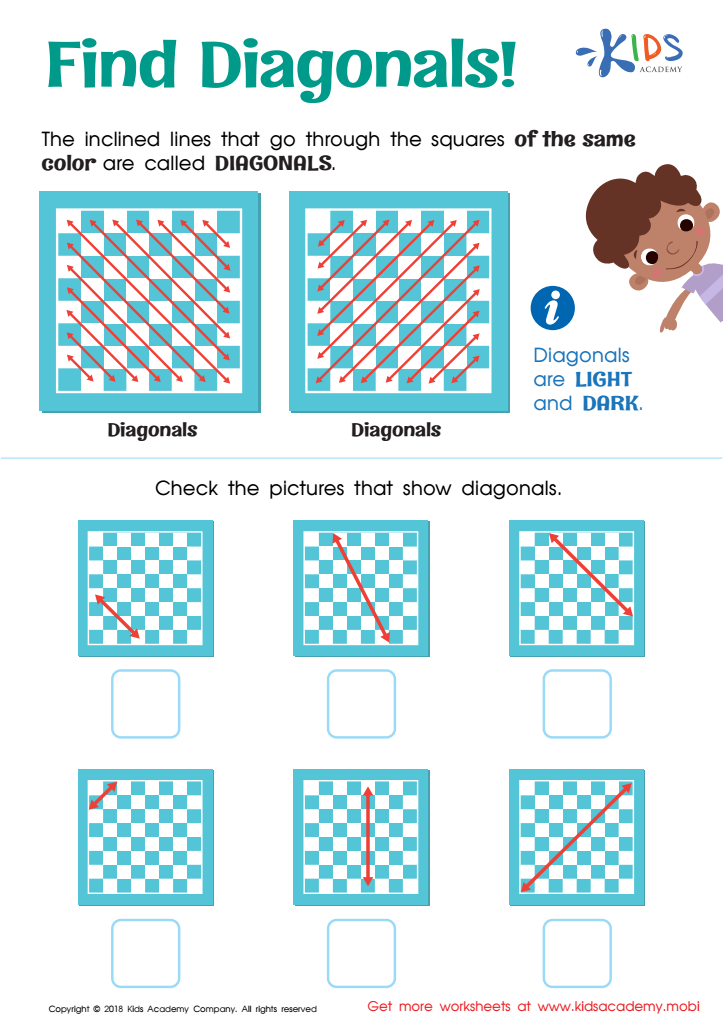

Find Diagonals Worksheet
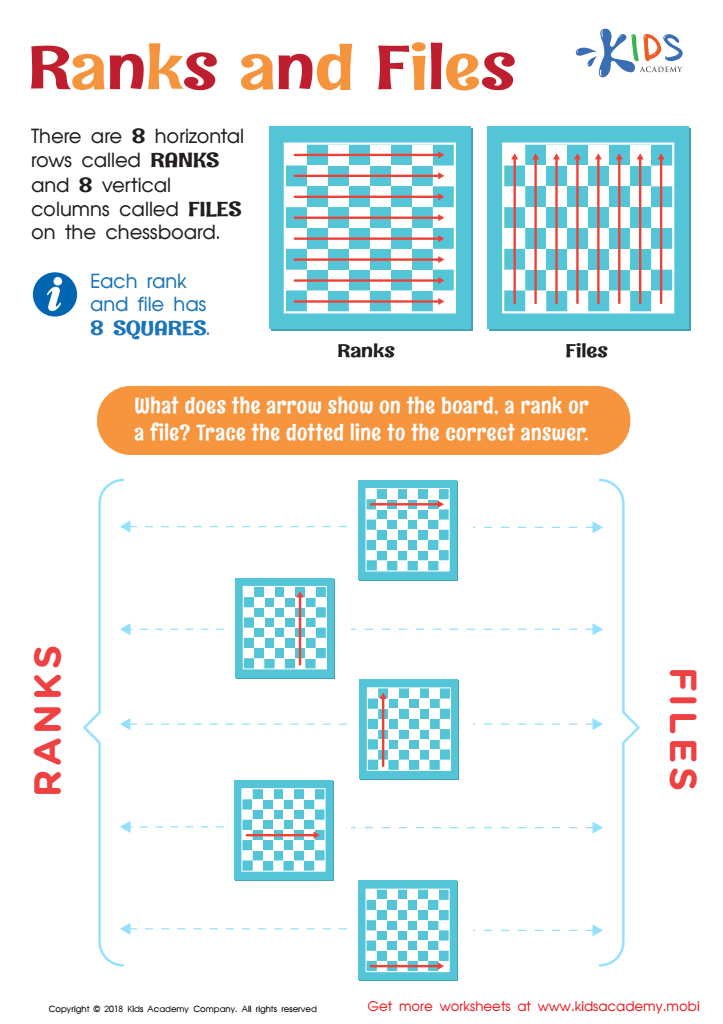

Ranks and Files Worksheet
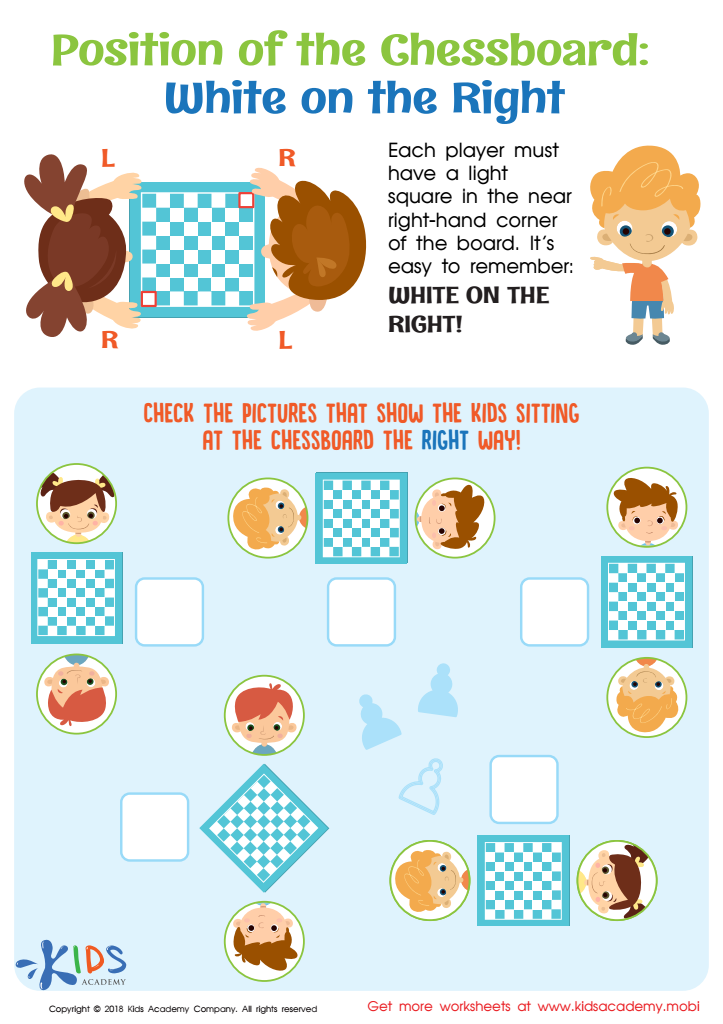

Position of the Chessboard: White on the Right Worksheet
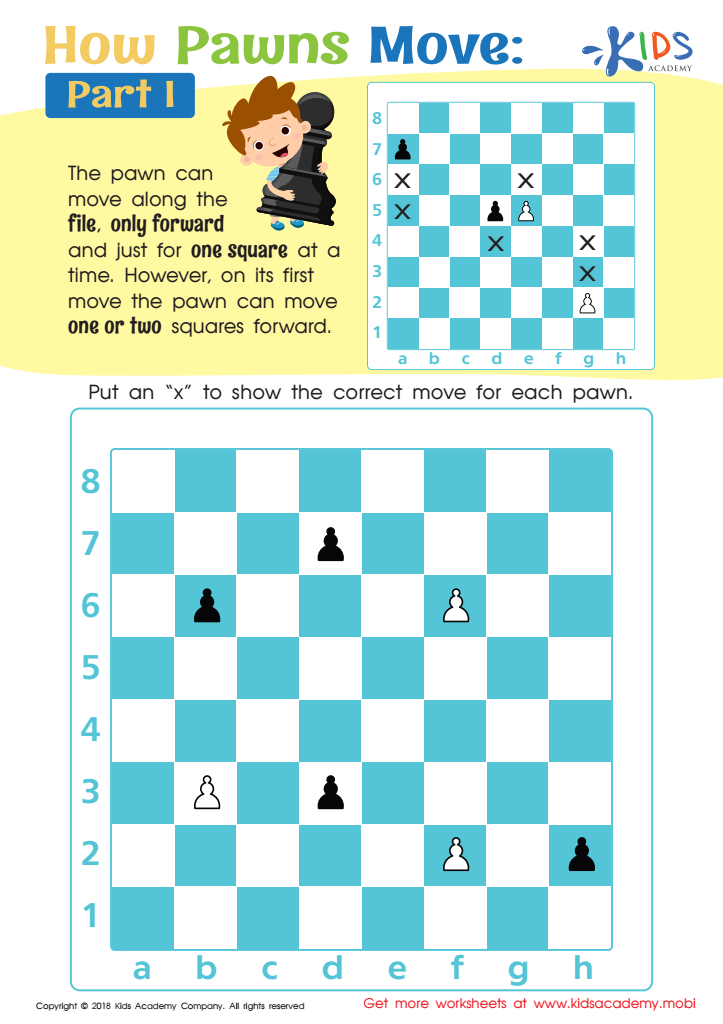

How Pawns Move: Part I Worksheet


How Pawns Capture Worksheet
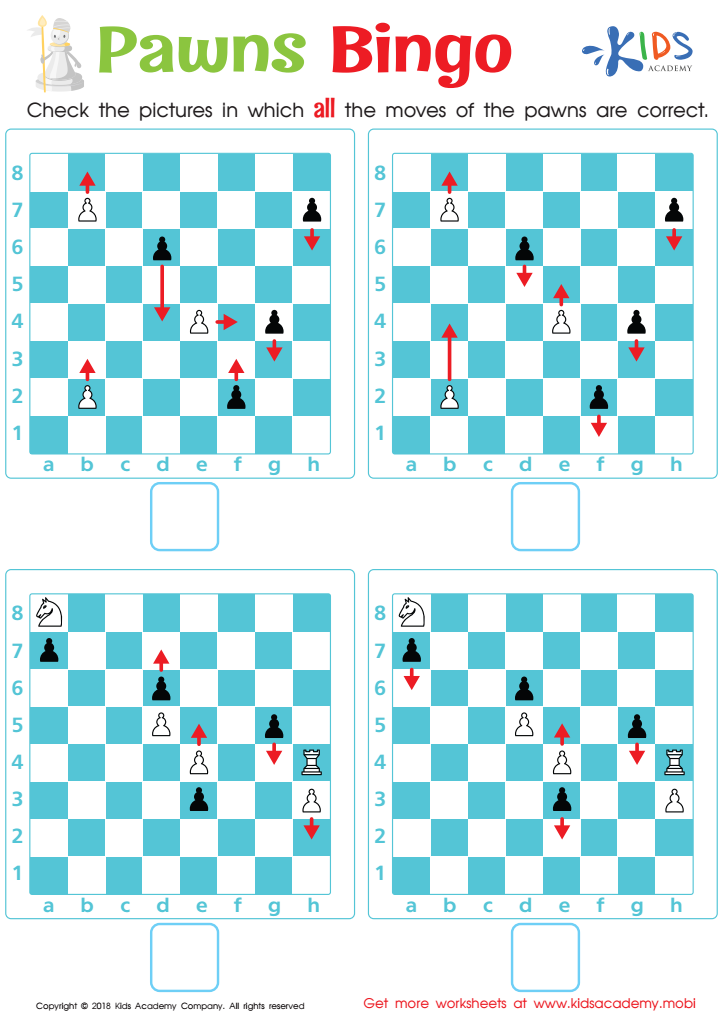

Pawns Bingo Worksheet
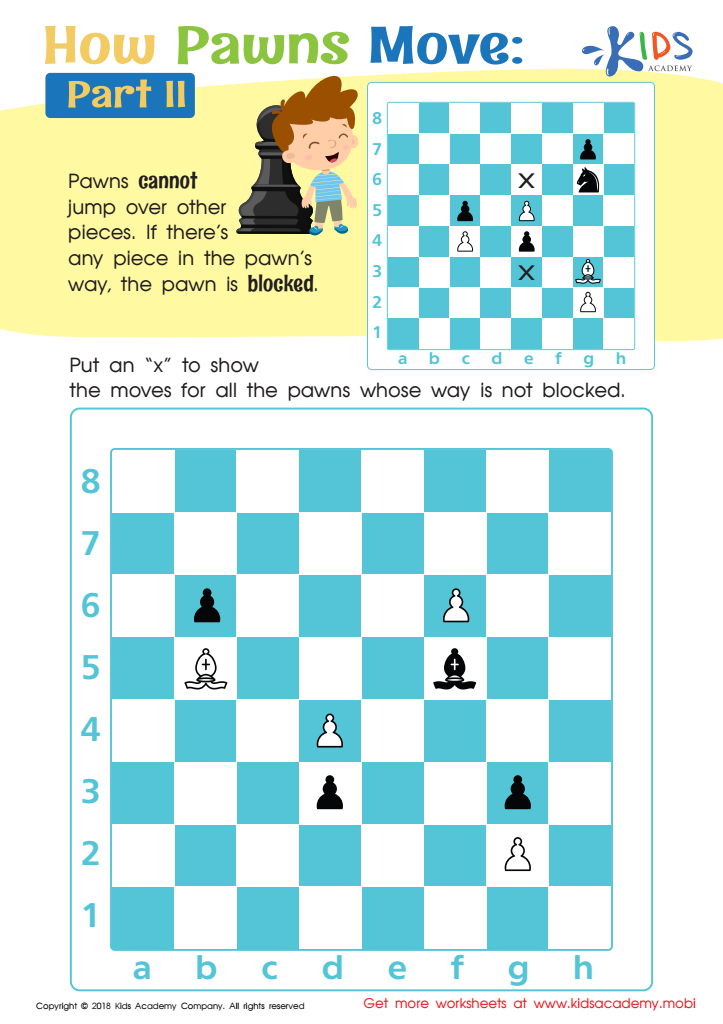

How Pawns Move: Part II Worksheet
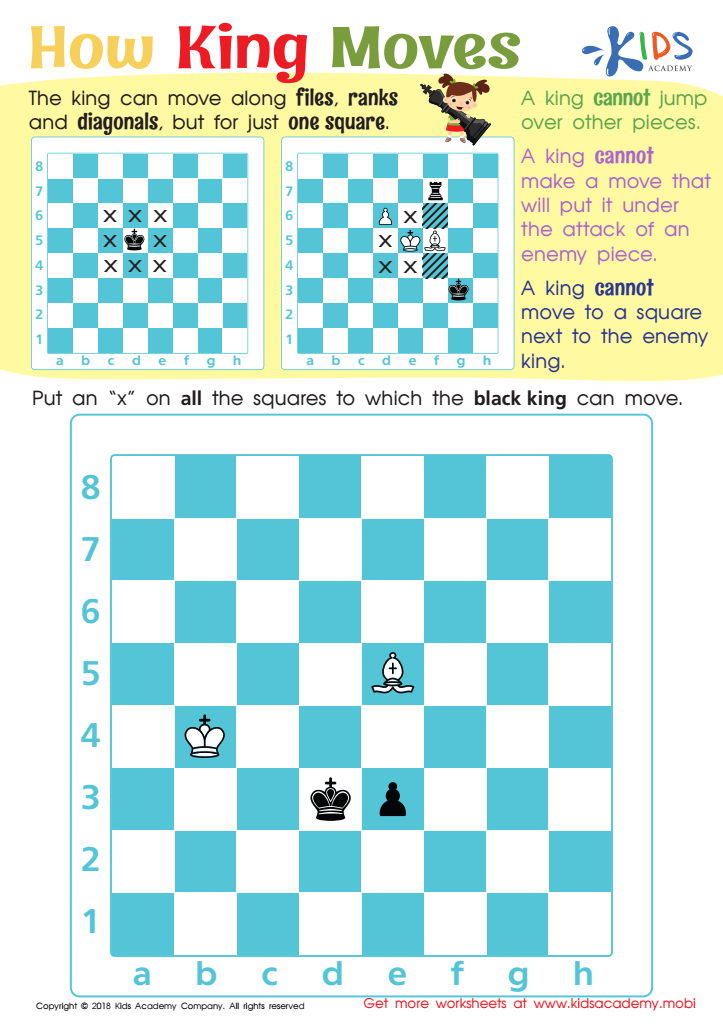

How King Moves Worksheet
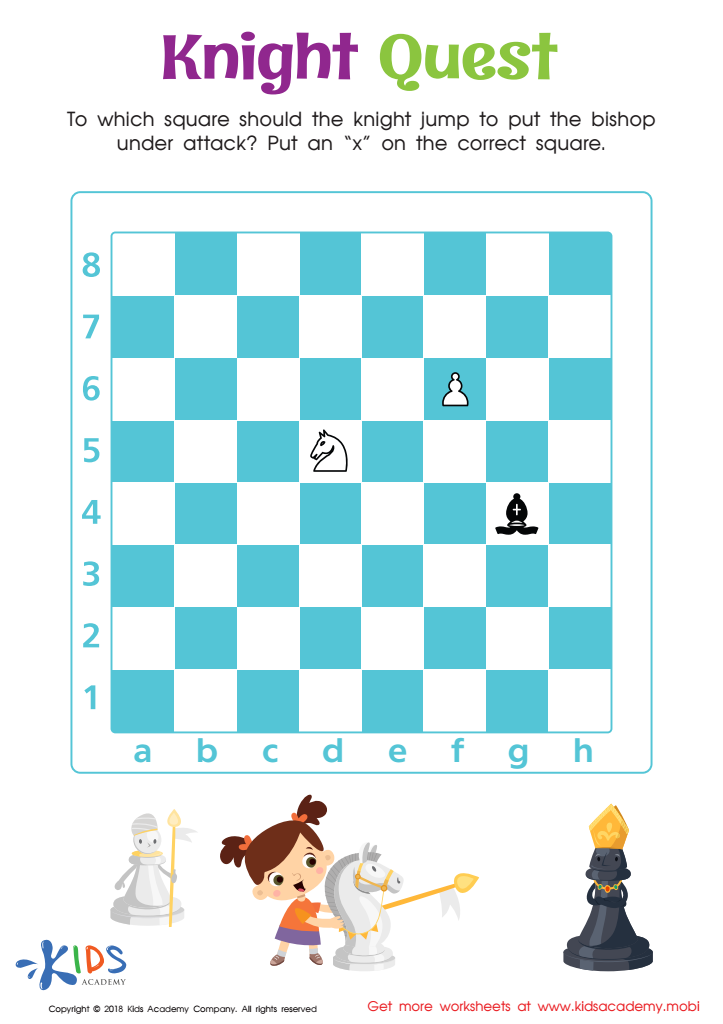

Knight Quest Worksheet
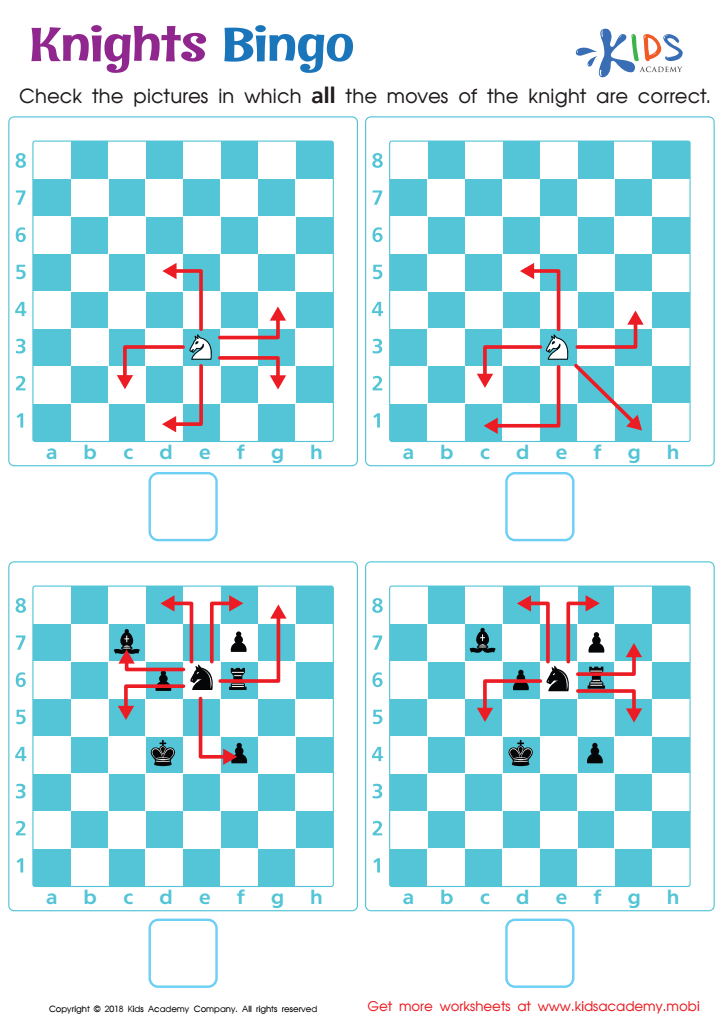

Knights Bingo Worksheet
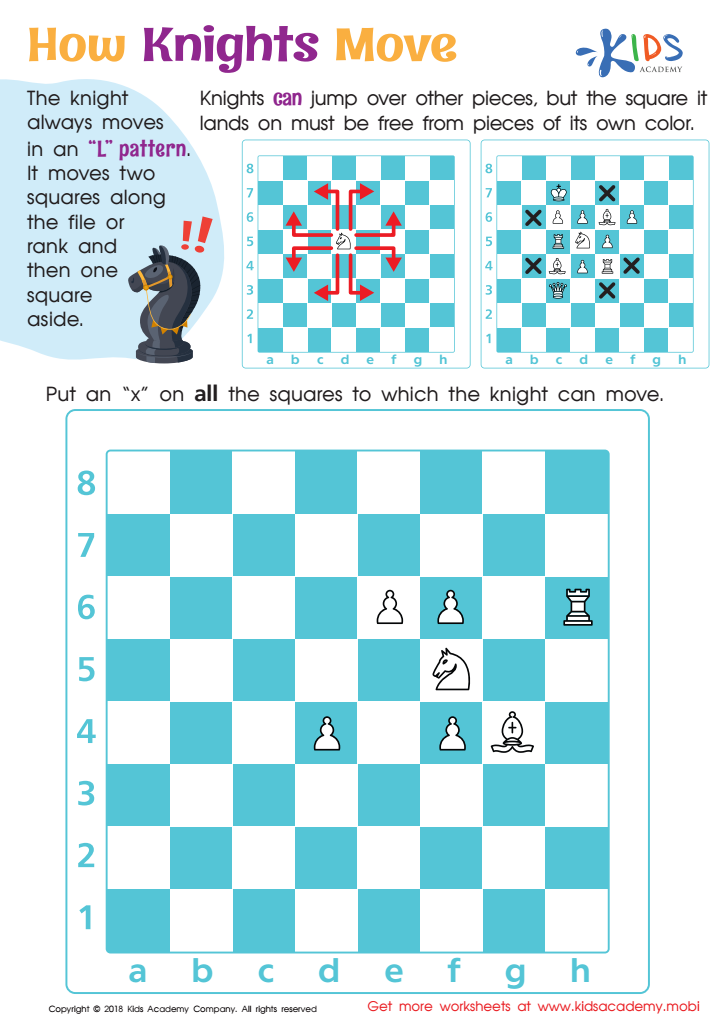

How Knights Move Worksheet
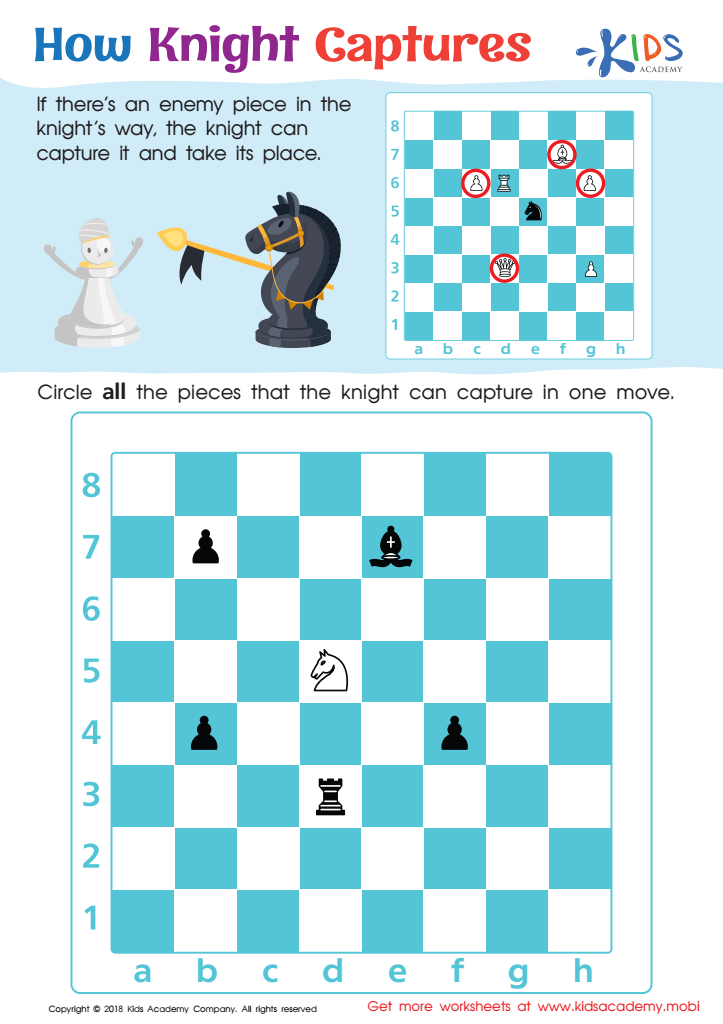

How Knight Captures Worksheet
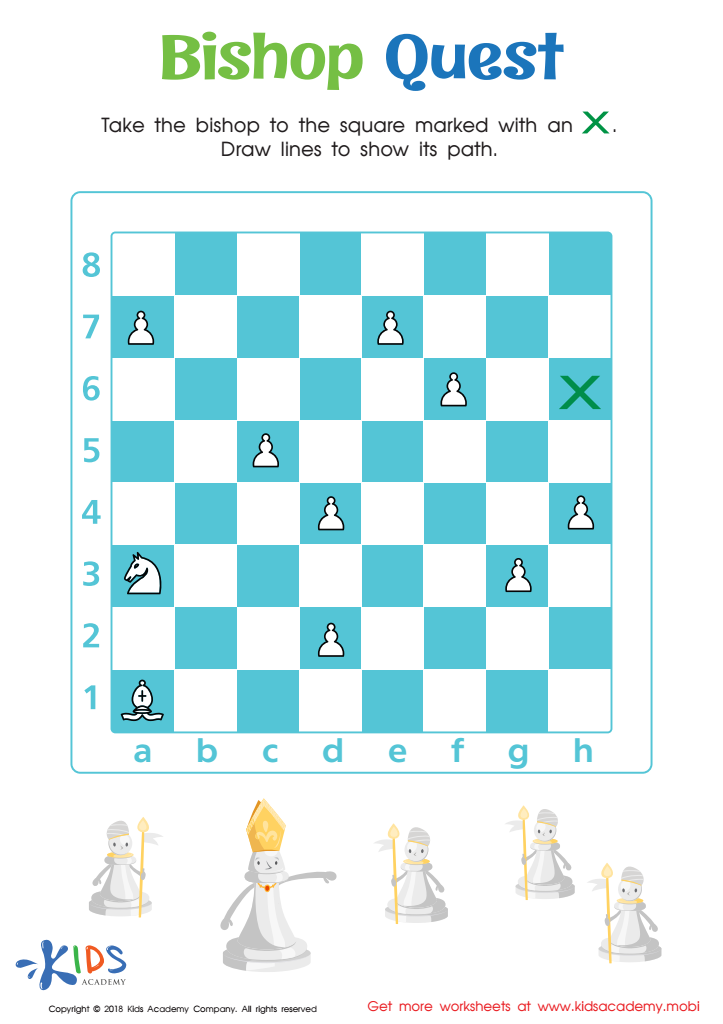

Bishop Quest Worksheet
Chess is often seen merely as a game, but for children ages 7-8, it serves as a powerful educational tool with far-reaching benefits. Parents and teachers should take an active interest in introducing chess to kids at this age because it enhances cognitive skills that are critical for academic success and well-being.
The strategic and tactical nature of chess encourages children to develop critical thinking skills. When playing chess, kids learn how to solve problems, recognize patterns, and think several steps ahead. This cognitive training translates directly into better performance in subjects like math and science.
Moreover, chess teaches important life skills such as patience, concentration, and resilience. Learning to stay focused during a game and reflecting upon both victories and losses teaches children how to manage their emotions and develop a growth mindset. These attributes are invaluable for their social and emotional development.
Additionally, chess offers a constructive avenue for children to engage with peers in a productive and competitive setting. It fosters a sense of sportsmanship and mutual respect, reducing the risks of engagement in less constructive activities.
Investing time in teaching children chess can set the foundation for a lifetime of cognitive and social growth, making it a worthy endeavor for parents and teachers alike.

 Assign to the classroom
Assign to the classroom

